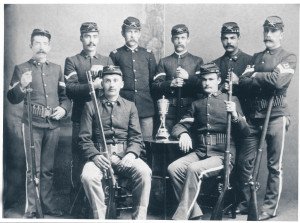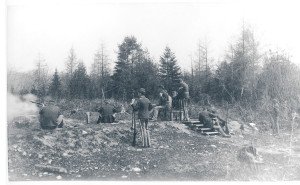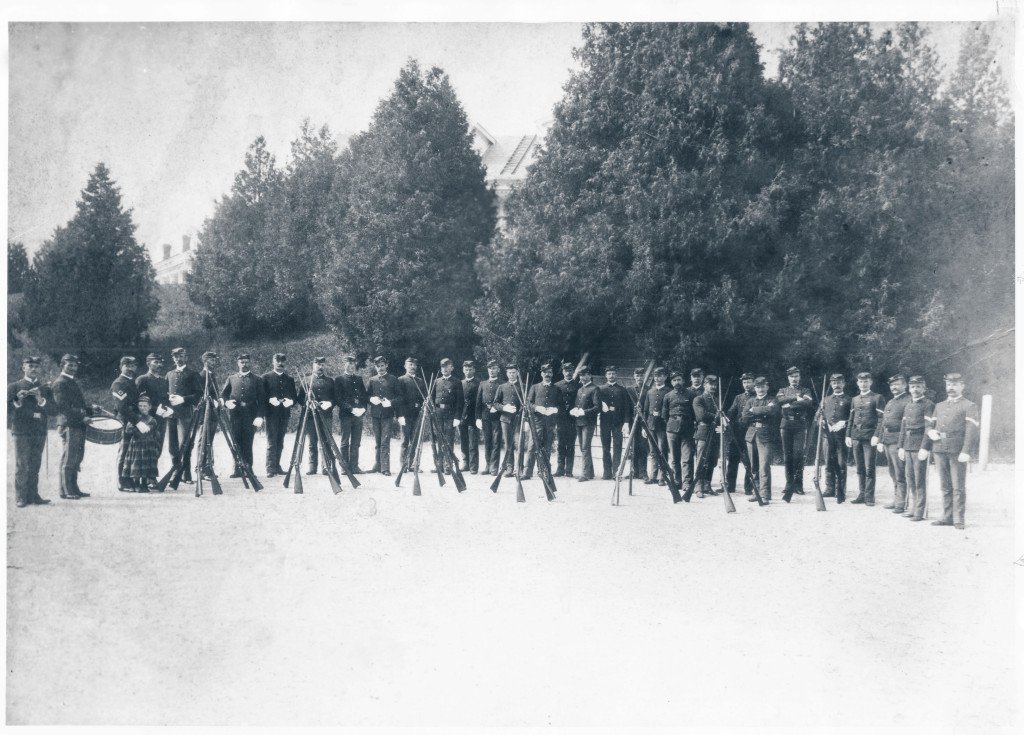By the 1880s, Fort Mackinac had little military value, instead serving primarily as the headquarters of the Mackinac National Park. However, the fort’s garrison still practiced critical military skills such as marksmanship, and the detachment of the 23rd Infantry stationed at Mackinac ultimately produced some of the finest sharpshooters in the entire U.S. Army.

In 1873, the army officially adopted M1873 Springfield rifle, commonly known as the .45-70 Springfield, as its primary shoulder arm. This new weapon could be remarkably accurate, but few soldiers in 1873 knew how to properly use their rifles. Although some officers, such as Lt. Col. George Custer, created training programs in their individual units, the army as a whole lacked a uniform marksmanship training regimen. Beginning in 1879, the army instituted a basic training program intended to familiarize soldiers with their rifles and teach them to shoot at targets up to 600 yards away. Further reforms in 1884 and 1885 increased the distances soldiers practiced at, generated a statistical analysis of marksmanship at every post in the United States, and created a number of awards and distinctions to highlight the skills of individual soldiers. The best marksmen, officially known as Sharpshooters and awarded medals for their skill, could hit the target 88% of the time at 200, 300, and 600 yards and 76% of the time at 800, 900, and 1,000 yards.
Soldiers at Fort Mackinac took regular target practice, just like their counterparts at posts across the country. The fort and surrounding military reservation included two rifle ranges- a 200-yard range just north of the post, and a 1,000-yard range further inland. Because the Mackinac National Park surrounded both ranges, in the mid-1880s Capt. George Brady limited the practice season to early summer to protect tourists who might wander into harm’s way. Every soldier, regardless of rank, participated in target practice. In 1886, the men of the 23rd Infantry visited the ranges twice a week, with Company K practicing on Mondays and Tuesdays while Company E fired on Wednesdays and Thursdays.

Such regular practice paid off for soldiers throughout the army, but especially for those stationed at Fort Mackinac. By 1886, the post was ranked third in the entire army for marksmanship, and 40 soldiers qualified as Sharpshooters. Many more Fort Mackinac men qualified for the slightly less challenging title of Marksman. Captain William Manning, the commander of Company E, was perhaps the best shot at Fort Mackinac- unsurprisingly, he also co-authored the army’s marksmanship training manual. Fort Mackinac soldiers also regularly competed in shooting matches against civilians and other soldiers. Lt. Edward Pratt captained the fort’s rifle team, which participated in matches against civilian teams from Cheboygan, St. Ignace, and other local towns. Sgt. W. Sconce and Sgt. William Williams, meanwhile, competed in nation-wide shooting matches held annually by the army, earning national recognition for their skills in 1887, 1888, and 1889.

Today, the remains of one of the Fort Mackinac rifle ranges are still visible just north of the fort, and historic interpreters regularly demonstrate the .45-70 Springfield rifles that the soldiers of the 1880s used so skillfully.









